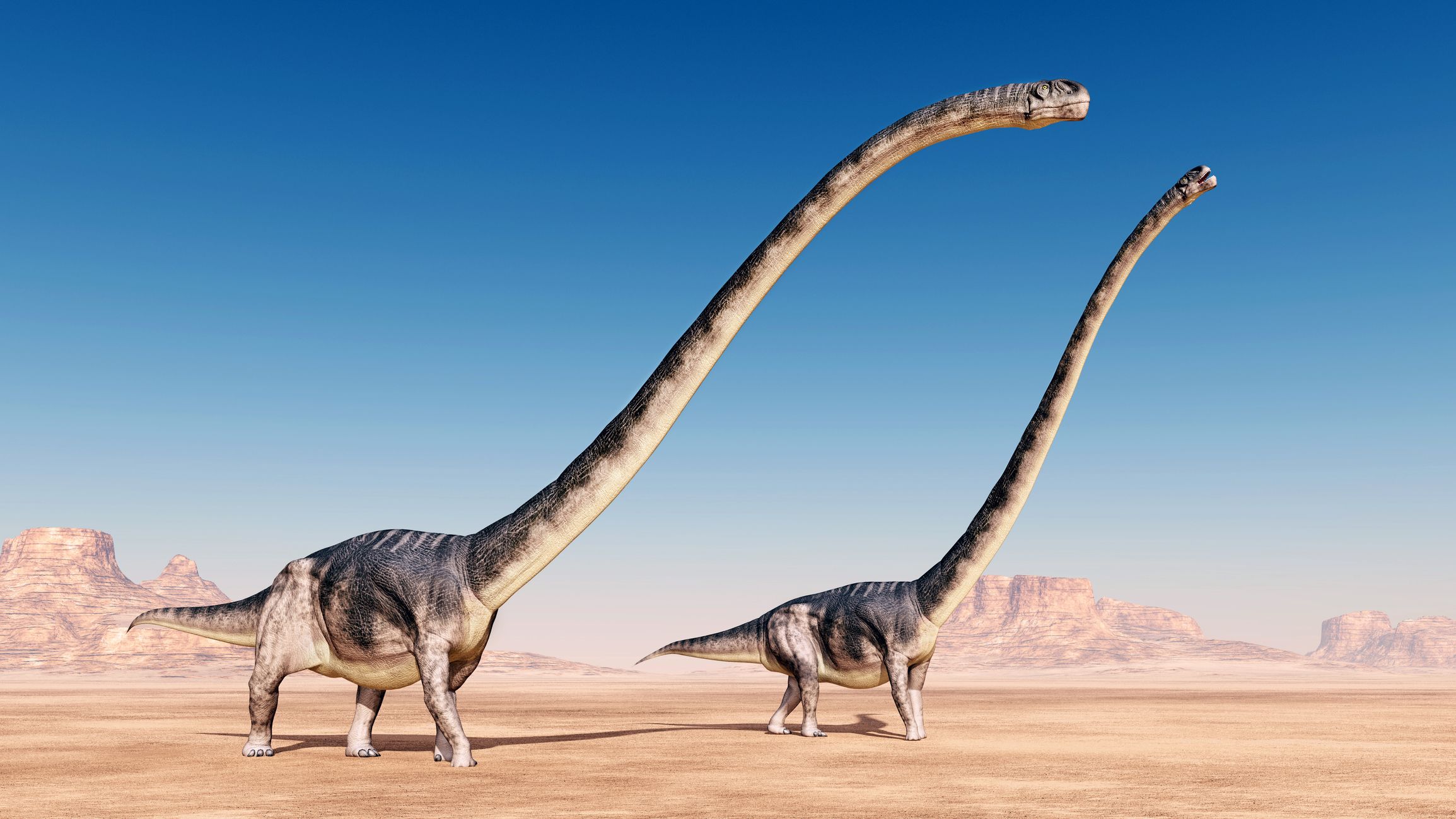
Paleontologists have discovered the remains of a new species of dinosaur in the central Argentine province of Neuquén—a region that was once an arid desert.
The bones, which date back to around 110 million years ago, actually belong to three separate animals—one adult measuring around 39 feet in length, and two child dinosaurs coming in at less than half that, Agence France Presse reported.
The team, led by researchers from the National University of La Matanza in Buenos Aires, have named the new species Lavocatisaurus agrioensis. It belongs to the sauropod group of herbivorous dinosaurs—a diverse collection of animals characterized by very long necks, long tails, relatively small heads and four, thick, pillar-like legs.
Many sauropods grew to enormous sizes and, in fact, the group contains the largest animals to have ever lived on land, such as Supersaurus, which could grow to more than 110 feet in length and Argentinosaurus, which may have weighed as much as 110 tons. Other notable members of the group include Diplodocus and Brontosaurus.
Surprisingly, the researchers found most of the skull bones, enabling them to create an almost complete reconstruction, according to a paper published in the journal Acta Palaeontologica Polonica, which describes the discovery. Sections of the neck, tail and back were also found.
The number of bones uncovered was not the only unusual aspect of the discovery. Dinosaur remains were not expected to be found in this area due to the fact that it was a desert when these animals lived.
"Not only is this the discovery of a new species in an area where you wouldn't expect to find fossils, but the skull is almost complete," Jose Luis Carballido, an author of the study from the Egidio Feruglio paleontology museum in Patagonia, told AFP.
"While one can imagine that this group of sauropods could have adapted to move in more arid environments, with little vegetation, little humidity and little water, it's an area in which you wouldn't be looking for fossils," he said.
The researchers believe that the dinosaurs moved around together and perished at the same time.
"This discovery of an adult and two juveniles also signifies the first record of a group displacement among the rebbachisaurus dinosaurs," Jose Ignacio Canudo, from Zaragoza University in Spain and lead author of the study, told AFP.
Uncommon Knowledge
Newsweek is committed to challenging conventional wisdom and finding connections in the search for common ground.
Newsweek is committed to challenging conventional wisdom and finding connections in the search for common ground.
About the writer
Aristos is a Newsweek science reporter with the London, U.K., bureau. He reports on science and health topics, including; animal, ... Read more
To read how Newsweek uses AI as a newsroom tool, Click here.








